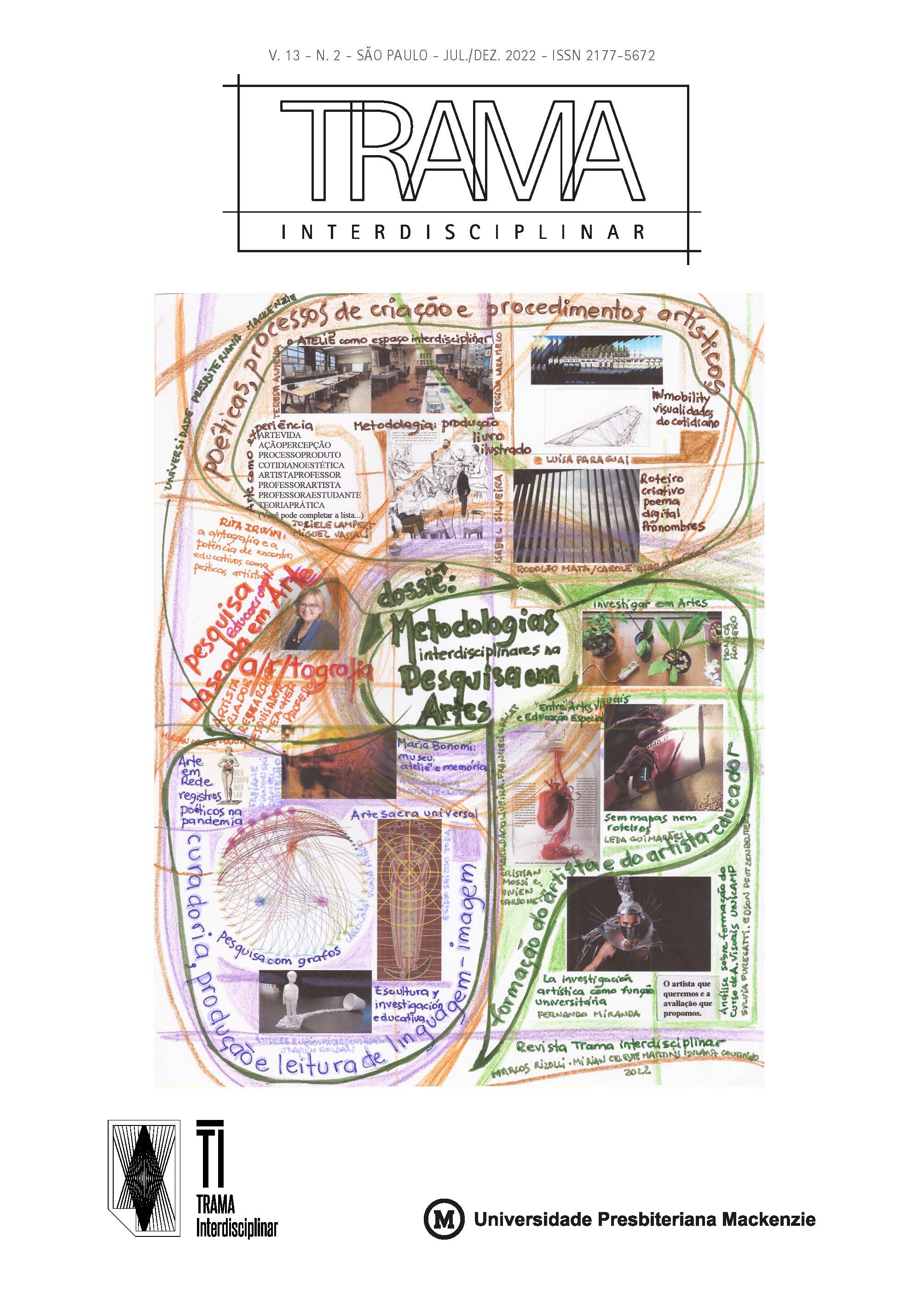Creative itinerary of the digital poem Pronombres
Keywords:
digital poetry, latin-american poetry, visual poetry, soundscape, digital artAbstract
The article describes in detail the process of creating the digital poem Pronombres, composed by Rodolfo Mata and Carole Chargueron, between February and June 2018. It begins with a reflection on the mixture of order and disorder in the creative process, the possibilities of registering it in a structured and coherent narrative and the degree of veracity that such narrative can achieve, considering that it is written a posteriori. It proposes several parallels with the essay “The Philosophy of Composition” (1846), written by Edgar Allan Poe to explain the origins of his poem “The Raven”, and announces that it will follow the same technique, trying to trace a “reverse itinerary” (in the words of Haroldo de Campos). Each author developed in his own area, Rodolfo Mata in poetry and Carole Chargueron in electroacoustic music. The assembly in HTML5 was done by Rodolfo Mata and around 40 progressive versions were produced on which both worked together. Multimedia creation is a complex process in which different elements (image, sound, movement), and different skills, resources and creators converge. This interaction mainly produces three phenomena —synergy, interference and modulation— which are explained. The beginning of Pronombres was the visual poem “Comunidad poética” (2015) by Rodolfo Mata, created from a photograph of the cabin of a commercial plane, in which several screens appear placed on the backs of the seats and in other parts of the plane. Editing the photograph, the author wrote several personal pronouns on these screens, generating a poetic tension among them, to question the isolation suffered by the passengers during the flight. In this way, the idea of community would be restored and the role of pronouns as “persons” would be staged, that is, “masks” in the Latin sense of the term “persona”. The article comments on the origins of three other visual poems by the author, with regard to the precedence of the image or the word and their articulation. Once Rodolfo Mata undertook the assembly of the interactive digital poem, the need to integrate the sound dimension appeared. For this Carole Chargueron decided to use the genre soundscape, of which a brief review is offered. The dynamics presented by the digital poem consist of a series of sound tracks and a set of animations in which the texts of the pronouns “dance” and are transformed in different ways as parts of poetic texts. The article explains the network of relationships between these elements and some of the metaphorical motivations that support them, which come from different areas: the regional diversity of Spanish, gender as a grammatical and cultural phenomenon, and identity. The article emphasizes team work and offers links to two Youtube videos and a list of audio tracks on SoundCloud.
Downloads
References
DE CAMPOS, Haroldo. “O texto-espelho (Poe, engenheiro de avessos)”. In: DE CAMPOS, Haroldo. A operação do texto. 1. ed. São Paulo: Perspectiva,1976. p. 23-41.
MATA, Rodolfo. Desescribir. 1a ed. México: Ediciones del Lirio / Argentina: Ediciones Postypographika, 2021.
PAZ, Octavio. Traducción: literatura y literalidad. 2. ed. Barcelona: Tusquets Ediores, 1981.
YUSTE, Miguel Ángel. “Jota que suena en el alma”. Heraldo de Aragón, 15 octubre 2010. http://rincondecoplas.blogspot.com/2010/10/jota-que-suena-en-el-alma-heraldo-de.html.
Downloads
Published
How to Cite
Issue
Section
License
Copyright (c) 2022 Rodolfo Mata, Carole Chargueron

This work is licensed under a Creative Commons Attribution 4.0 International License.
A Revista TRAMA Interdisciplinar reserva os direitos autorais das contribuições publicadas em suas páginas. Esses direitos abrangem a publicação da contribuição, em português, em qualquer parte do mundo, incluindo os direitos às renovações, expansões e disseminações da contribuição, bem como outros direitos subsidiários. Autores têm permissão para a publicação da contribuição em outro meio, impresso ou digital, em português ou em tradução, desde que os devidos créditos sejam dados à Revista TRAMA Interdisciplinar. O conteúdo dos artigos é de responsabilidade de seus autores.








